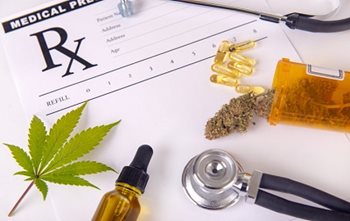
CBD 101: An Introductory Course
CBD (in the form of oils, creams, lotions, edibles and more) has entered mainstream America! Their presence has been noted in the fields of food and beverages, cosmetics, and pharmaceuticals. With projections for this industry to surpass $20 billion dollars by the year 2024, healthcare providers need to be aware of the ever-growing consumer usage, as well as the medical and legal implications for its users.
CBD is defined as cannabidiol. It is an active chemical in the Cannabis Sativa plant (also known as marijuana or hemp). While CBD is one of over 80 chemicals known as cannabinoids, by itself it does not cause a “high.” According to the World Health Organization, CBD exhibits no effects indicative of any abuse or dependence potential. Furthermore, to date, there is no evidence of public health-related problems associated with the use of pure CBD. The issue at hand is actually the origin of the CBD ingredients. While delta-9-tetrahydrocannabinol (THC) is the major active ingredient in marijuana, cannabidiol is also obtained from hemp, which contains only very small amounts of THC. The purpose of the continuing education program is to inform and educate healthcare providers on the various forms of CBD and their usage in mainstream medicine.
Questions? Check out our FAQs page and How Online IV Certification Works!
Objectives
Upon completion of this course, participants will be able to:
- Discuss the origins of CBD usage.
- Verbalize differences between marijuana-based and hemp-based CBD products.
- Identify recognized usages for CBD (disease-specific).
- Discuss route of administration for CBD usage.
- Discuss components of the farming hemp bill.
- Verbalize federal laws related to CBD usage (healthcare workers and urine drugs screens).
- Discuss medical marijuana act/medical compassion act.
- Identify state rules regarding CBD.
- Acknowledge the need for additional research to identify CBD based products that offer optimal benefit with minimal risk.
Curriculum
Chapter 1: Introduction
Chapter 2: History of CBD
Chapter 3: The Endocannabinoid System
Chapter 4: Available Routes Of Administration
- Ingested
- Sublingual
- Topical
- Inhaled
- Insufficient Evidence
- The Entourage Effect
- National Institutes Of Health (NIH) Views On CBD
- Centers For Disease Control and Prevention (CDC) and CBD
- World Health Organization (WHO) and CBD
- Legal Issues: Urine Drug Screens
Chapter 10: CBD And The American Cannabis Nurse Association (ACNA)
Chapter 11: References
- California Bill 241
- Implicit Bias in Healthcare
- What is Implicit Bias?
- Implications of Implicit Bias in Healthcare
- How to Reduce Implicit Bias
Price: $18.00
Contact Hours: 1.5

Course Author

Maureen Sullivan-Tevault
Maureen graduated nursing school in 1981 and has spent her years in the Emergency and Trauma field, including nursing positions as the Emergency Department Manager, Director of Staff Education, Trauma Coordinator, Cardiology Nurse Navigator, and Stroke Program Manager.
Read Full BioCourse Accreditation
See our Accreditation Statements page to view our accreditation information.